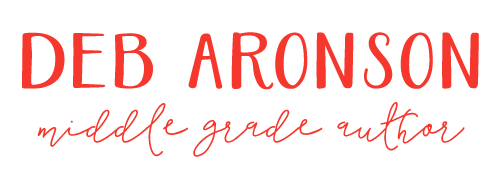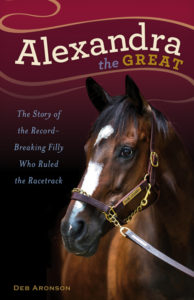“Formative assessment is a feedback loop between the teacher and the student”
NCTE Council Chronicle March 2007
What do class discussions, quick writes, reader response journals, quizzes, and writing conferences all have in common? They are all examples of the wide range of classroom-based activities that teachers use to measure how well their students are learning.
“Students crave feedback,” says Shannon Davis, an English teacher at Seward High School in Nebraska. “Good teaching requires that you give students feedback along the way in class. They can’t always assess themselves. Formative assessments enable me to show my students what they do know and have mastered and to point out what they need to spend more time with before the next quiz or test or whatever comes next. I can’t imagine teaching for more than a day without getting a sense of how the students are responding to the material. Formative assessment is just as important as summative.”
When Davis realizes students are struggling she’ll either re-teach a topic, put students in small groups so they can help one another, or hold another class discussion to clarify the material. Davis also uses reading checks to see how students are doing throughout the process of reading a long novel.
“If they stop understanding the story, we’ll slow down and review,” she says. “If they’re getting it and starting to get bored, we’ll pick up the pace.”
Summative assessment, an exam that comes at the end of a unit, for example, identifies those students who did not learn the material, but does so too late to help them. With the advent of No Child Left Behind legislation and its emphasis on standardized, high-stakes summative testing, it is good to keep in mind that formative assessments provide more timely and accurate measures of what students are learning. NCTE supports formative assessment as the most valuable classroom tool for evaluating student learning in time to adjust teaching to meet student needs.
Brian Huot, professor of English and the writing program coordinator at Kent State University, suggests it’s important to avoid the trap of thinking “formative assessment: good, summative assessment: bad.” “There are times, when students are struggling to learn, when formative assessment is very good,” he says. “But that does not mean summative assessment, or testing and giving out grades, is bad. Grades and tests are qualitatively different from formative assessments. They do different jobs.”
Teachers use formative assessment in a variety of ways.
In Clark Kolterman’s speech classes, for example, the summative assessment is a five-minute speech with visual aids. By instituting formative assessments, like checking student outlines, their talking points, and research notes, Kolterman, a language arts teacher at Seward High School in Nebraska, can monitor, well before that final speech, whether his students are grasping the material. In this way Kolterman can guide students along the way, rather than finding out the day of their speech that the student did not, for example, grasp the concept of a visual aid.
Kolterman notes that one of the beauties of formative assessment is that it can be suited to each teacher’s style, rather than being an officially mandated procedure. For example, some teachers might do a reading check every day, others might chat occasionally one-on-one with students.
In one case Kolterman realized that many of his students hadn’t understood enough about the characters in a book they were reading. Before getting further into the novel, he circled back around to that topic.
“It didn’t hurt the ones that knew the information because they could help me teach it,” says Kolterman. “We want students to have success in the classroom. Formative processes are one way to help them learn.”
Formative assessments work particularly well for complex topics, says Kathryn Mitchell Pierce, writing specialist at Wydown Middle School in St. Louis, Mo. She recently assigned a short, end-of-class writing assignment for students to write about how Manifest Destiny impacted Native Americans living west of the Mississippi.
The unit on Manifest Destiny had complex concepts the students need to understand and are not “as simple as ‘choose a, b, or c’ on a multiple-choice test,” says Pierce. By having students perform an informal writing assignment, Pierce could determine whether or not the students grasped concepts in the unit as well as writing concepts, such as how to write a thesis paragraph. By looking at the responses, Pierce could make sure all students were up to speed before moving on and determine an approach if some were lagging. If some students are struggling, Pierce might pull that group of students out to do more instruction while the rest of the class works on a different project.
“Formative assessment is a feedback loop between the teacher and the student. It is an assessment for learning rather than of learning,” she says.
In order to use this approach effectively, teachers must be able to see students both as individuals and as a group, Pierce adds. And for teachers who fear formative assessments will mean even more work in an already over-crowded schedule, Pierce would argue that it’s “not so much about collecting new or more data so much as actually using the data you have.”
“The approach means that you have very much in mind what your ultimate goals are, you’re actively communicating them to the kids and you’re using the feedback you provide to help them move toward those goals and to give them honest feedback about how they are doing at a point where they can do something about it,” she says.
This ability to see students both as individuals and as part of a group is what Heidi Mills, professor of elementary education at the University of South Carolina and one of the founders of the Center for Inquiry, a magnet elementary school, calls “kidwatching.” Kidwatching, a term coined in 1985 by Yetta Goodman, refers to observing and recording children’s literacy development. In the course of kidwatching teachers also gain new understandings of the ways children think and learn. Ultimately, their observations help teachers plan curriculum and instruction that are tailored to individual strengths and needs.
“Kidwatching is also about how to turn the information you learn through observation into moment-to-moment decisions or formal mini-lessons or even new curricular structure,” says Mills, who began her career as an elementary school teacher.
“Teachers who really engage in careful kidwatching — and don’t just think about what are they supposed to teach — focus first on ‘who is this child in front of me or this group of kids in front of me, what are their strengths, what strategies are they currently employing, and what is the logical next move for me to make to help them continue to grow,’” says Mills.
“By looking closely at and listening carefully to children as readers and writers, we are able to pay attention to the strategies they use to construct and share meaning,” she says. “We learn about our children’s favorite authors, the genres they access most frequently, the connections they make within and across engagements, the kinds of questions they pose, and the issues and ideas that capture their hearts and minds.”
For instance, one teacher at the Center for Inquiry starts his year by holding individual reading conferences with each of his 22 students. In these conferences he finds out what the students are currently reading, how they make their reading selections and what their strengths are. Then he has a written conversation with each student about their reading. In the process he takes a close look at what students are doing as writers and readers, which helps him start thinking about what he’s going to work on with the whole class, or what he might recommend to students as individual readers.
For teachers who see many students in a day, one-on-one conversations may be rare, but there are many other ways to monitor student progress.
For example, Julie Waugh, another teacher at the Center for Inquiry, has her students keep reading logs. She asks them to review their own logs and reflect (in writing) on the kind of reading that they’re doing; to document what they are doing well and to set new goals for themselves as readers. She might see, for example that the class is not reading poetry much which might lead her to invite students to participate in reading another genre. The big question she poses is, “What are we doing well, what makes sense for us to do next?”
How can teachers learn to use formative assessments to the best effect in their own classrooms? Pierce recommends something Richard Dufour, former superintendent of Adlai Stevenson High School in Lincolnshire, Ill., calls “professional learning communities.” These are groups of people within a school who have a shared focus (for example, American History) who come together regularly to look at student work and to answer three questions: what do we want students to know; how will we know if they know it; what will we do if they don’t.
“That’s not rocket science,” says Pierce. “But what is rocket science is that at Adlai Stevenson they’ve scheduled in time for teachers to engage in these meaningful conversations with their colleagues — with their students’ work, state learning objects, and other relevant material in front of them, and to have that be a focus. It’s teacher study groups but it’s driven by student learning rather than teacher learning.”
Formative assessments are particularly valuable for measuring how students are progressing toward learning goals because the results of the assessment give both the teacher and the student immediate feedback on what to do next.



0 Comments